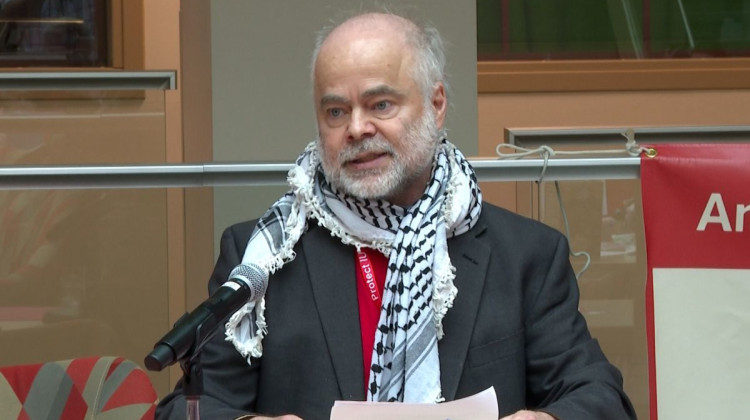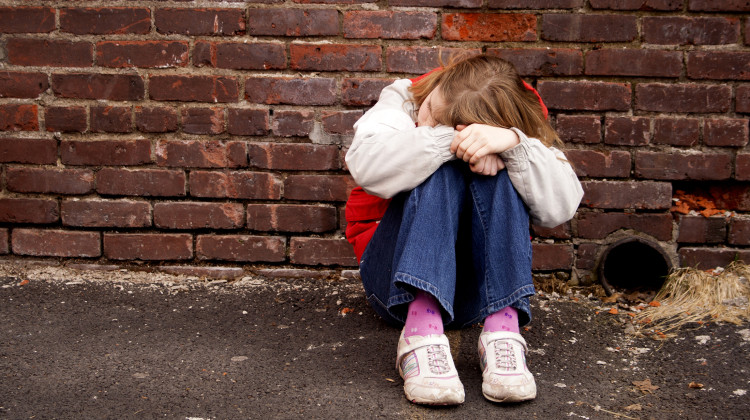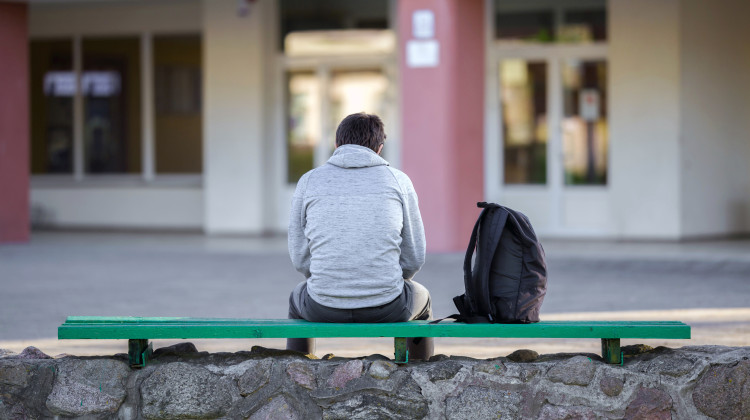
More than 200,000 Indiana students missed 10 percent of school days or more — about 18 days over the course of a full academic year.
(Courtesy of Unsplash)Nearly 19 percent of Indiana students were chronically absent last school year, a substantial increase from prior years. It's the latest evidence that the pandemic worsened long standing educational inequities as the rate of chronic absenteeism doubled among Black students to more than 38 percent and more than doubled among students learning English to nearly 24 percent.
The spike in the number of children missing school came as districts switched back-and-forth between in-person and virtual instruction and families grappled with turmoil at home. More than 200,000 Indiana students missed 10 percent of school days or more — about 18 days over the course of a full academic year. The new data was provided to WFYI by the Indiana Department of Education, and it includes remote and in-person attendance.
Advocates said it’s understandable that schools had attendance problems during the pandemic. Yet some fear that without attention from schools and communities, those problems could persist. And missing school, no matter the reason, puts students at risk of falling behind academically, from learning to read to graduating high school.
The high number of Black students who were chronically absent was particularly concerning for advocates and educators, who pointed to the pandemic’s disproportionate effect on Black families as a cause.
“It's appalling — not surprising,” said Gwen Kelley, an education consultant and former researcher at the Equity Project of Indiana University.
"When you think about COVID, we had a crisis in child care, we had a crisis in internet service, we had a crisis in health,” she said. “Many of those parents were essential workers, and they were still going to work.”
The pandemic also exposed problems that already existed, Kelley said. Even before COVID-19, Black children in Indiana were more likely to be chronically absent from school — with an overall rate of about 19 percent in 2018-19.
During last school year, Black students saw the largest rise in chronic absenteeism of any racial or ethnic group. Hispanic and multiracial students also had double digit percentage point increases in chronic absenteeism, while White and Asian students had smaller increases.
The increase in the number of English language learners who were chronically absent is particularly notable because prior to the pandemic, those students were slightly less likely to miss school than their peers. But last school year, the chronic absenteeism rate among English language learners surpassed the rate among other students — rising by 15 percentage points compared to 2018-19.
The most vulnerable students in the state were particularly likely to miss school last year: about 46 percent of homeless students; about 33 percent of students in foster care; and about 27 percent of students from low-income families were chronically absent.
Inside schools
Leaders at schools that saw large increases in the number of students missing class said attendance problems were worse when students were supposed to be learning virtually.
At the Tindley charter network in Indianapolis, where 85 percent of students are Black, the number of students who were chronically absent rose to about 51 percent last year. The change was most significant at the high school, where 34 percent of students missed enough school to be chronically absent.
To allow for social distancing, the high school was only able to bring about a quarter of students back to the building, said Tindley CEO Brian Metcalf. And it was hard to get students to log on remotely, even though the network spent a lot of time trying to boost attendance last year.
School administrators made home visits and social workers worked with families to make sure they had basics like food, housing and bus passes. But the schools still had a spike in absenteeism.
This year, Tindley is using federal funds to try and improve attendance, including hiring more social workers and assistant principals and creating home rooms so students get more dedicated support.
Metcalf believes schools should focus on attendance, because if chronic absenteeism persists, it will affect academics.
“We know that the pandemic has disproportionately impacted Black families,” Metcalf said. “We have to make sure that we are reducing the barriers by providing as much wraparound service and using as holistic an approach as possible.”
At URBAN ACT Academy, a charter school in the Indianapolis Public Schools innovation network, nearly three out of four students were chronically absent last year. The school serves a significant number of students who are homeless or have insecure housing, and many families were dealing with urgent problems such as how they would afford rent and feed their families, said Head of School Nigena Livingston.
"Remote learning during a pandemic was especially hard for our school community," she said. Livingston added, “it's a privilege for some folks to be able to work from home and to monitor their kids day to day experiences during remote learning, but other people don't have that luxury.”
Students were especially likely to miss school when it was remote. When that happened, staff visited to see why they were not logging on and came up with plans to help, Livingston said. Sometimes students had technology problems, like not having the internet or having a broken computer, she said. Other times parents weren’t able to supervise remote school because they were at work.
Sometimes, Livingston said, students would tell their parents there was no school, and the parents would accept that without question.
The future
Schools across Indiana have largely returned to in-person instruction this academic year. And although the pandemic is still disrupting education when staff or students get sick or quarantine, far fewer students are expected to quarantine under new state guidance, which allows asymptomatic close contacts to stay in school if masks are required.
That is expected to make a big difference in Muncie Community Schools, where 44 percent of students were chronically absent last year, because students will not be forced to switch to remote learning, according to spokesman Andy Klotz.
Holly Lawson with the Indiana Department of Education said with the return to in-person instruction, “we anticipate more students will receive the local support they need to establish consistent attendance.”
But some advocates worry that higher rates of chronic absenteeism could persist.
Schools were in “survival mode” last year, so it is not surprising that chronic absenteeism rose, said Kate Roelecke, director of strategy and operations at the Marion County Commission on Youth, known as MCCOY. But it is important to tackle the issue this year.
“I think what we're seeing this year is that we sort of just picked up where we left off, like nothing happened in some ways,” she said.
Schools and communities need to help reengage families in education and increase mental health support for students, Roelecke said.
UPDATE Nov 15, 2021: This story has been updated to include additional context about URBAN ACT Academy.
Contact WFYI education reporter Dylan Peers McCoy at dmccoy@wfyi.org. Follow on Twitter: @dylanpmccoy.
 DONATE
DONATE





 View More Articles
View More Articles



 Support WFYI. We can't do it without you.
Support WFYI. We can't do it without you.